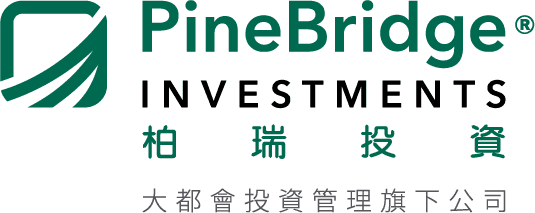最後修訂於2025年5月 。
重要法律資料
本網站僅供香港居民使用。
如在任何司法管轄區或向任何人士進行發售或招攬認購屬未經許可或不合法,則本網站不構成在上述司法管轄區或向上述人士作發售或招攬認購用途。除非在任何有關的司法管轄區向任何人士要約認購屬合法行為,並且已遵守任何現有的登記或其他法律規定,否則任何人士不可視本網站為認購要約。倘若本網站在任何司法管轄區被禁止發放或瀏覽,本網站不會向該等司法管轄區的任何人士作出定向。擬瀏覽本網站所載資料或申請本網站所述任何基金(「基金」)的單位或份額的個別人士須遵守有關司法管轄區的法律及其他規定。瀏覽本網站時,閣下聲明及保證,閣下所在的司法管轄區之適用法律及法規允許閣下瀏覽有關資料。
本網站所載資料尤其不得在美國分發,且不構成在美國或為任何美國人士的利益進行出售要約或要約購買任何證券的游說。基金尚未且不會根據經修訂的《1933年美國證券法》登記,故不得在美國公開發售。
本網站所載資料不構成投資建議。基金投資未必適合所有投資者。閣下如對本網站所載之任何資料有不明白之處,請諮詢閣下的股票經紀、律師、會計師、銀行經理或其他財務顧問。
任何基金的投資目標並不保證必會實現。過往的表現並非未來表現的指標。投資涉及風險。投資價值可跌可升。僅供能承受投資虧損的人士進行投資。倘投資回報並非以美元/港元計價,以美元/港元為基礎的投資者會承受匯率波動。
本網站(包括本資料)受香港法律管轄。香港法院對本網站所引起或與本網站有關的任何訴訟、申索、爭議或法律程序有專屬管轄權。
重要風險披露:
柏瑞環球基金
柏瑞環球基金乃開放式傘形單位信託,由投資目標及風險狀況各不相同的子基金組成。該等子基金可能投資於股票、債券、貨幣市場證券及/或其他工具(包括金融衍生工具)。
子基金投資於股票及股本相關證券可能會承受股本投資、市場波動、貨幣、對手方及流動性風險等。
子基金投資於債券證券或具有吸收損失特點的債務票據可能會承受定息違約風險、定息信貸評級風險、市場波動、貨幣、利率、主權債務、對手方風險及投資於具有吸收損失特點的工具之風險等。若干子基金可能投資於低於投資級別或無評級的債務證券,該等證券可能會承受較高的流動性及違約風險
若干子基金可能投資於集合投資計劃(包括房地產投資信託基金)、交易所買賣基金及/或集合投資計劃,因此可能會承受交易所買賣基金及集體投資計劃的投資風險 ,以及與相關基金關聯的風險。若干子基金投資於商品,可能承受商品風險。
若干子基金可能投資於在資本結構中較其他證券次級的證券,可能承受次級風險等風險。
若干子基金投資於點心債券(即在中國大陸以外發行或分銷以人民幣計價的債券),可能承受點心債券市場風險等風險。
若干子基金可能利用專有或第三方量化算法和模型及/或採用風險受限策略,因而承受額外風險,如量化模型、風險受限策略風險。若干子基金可能採取資產配置策略,因而承受額外風險,如資產配置風險。
若干子基金可能投資於特定地區/國家/行業/工具或少數市場或小型/中型公司,因此可能會承受額外風險,如較小型公司風險、集中、貨幣、流動性及市場波動風險。若干子基金可能主要投資於歐洲國家,可能會承受額外風險,如歐元及歐元區風險。
子基金投資於新興市場(包括中國和印度)可能會承受額外風險,如新興市場、流動性及市場波動風險。子基金的投資若涉及中國可能會承受有關中國的風險,若干子基金亦可能承受合格境外投資者相關的風險。子基金的投資若涉及印度經濟可能會承受額外風險,如印度外匯管制風險及有關毛里求斯附屬公司的印度稅務風險。
子基金可能承受環境、社會或管治(「ESG」)相關風險和可持續性風險。
子基金可能用金融衍生工具進行有效投資組合管理(包括對沖)及/或投資用途,但不會為任何目的廣泛地使用金融衍生工具。若干子基金亦可能用金融衍生工具進行證券投資及建立該等證券的綜合短倉。該等子基金可能會承受額外風險,如會對子基金的資產淨值造成不利影響的差價合約、對手方、流動性、關聯性、信貸、波幅、估值及結算風險等。
投資者可能會因投資損失風險及使用金融衍生工具產生的槓桿作用而蒙受重大損失。
股息(如有)或會在基金經理酌情決定下從若干子基金的資本中撥出支付。此舉可能導致投資者原投資金額或原投資金額應佔的任何資本收益部份退回或提取,並可能導致該等子基金每單位資產淨值即時減少。
投資者不應僅基於本網站所載資料作出投資決定。閣下應細閱相關基金的發行章程,以瞭解詳細資料包括投資風險。
柏瑞基金系列
柏瑞基金系列乃傘形單位信託,由投資目標及風險狀況各不相同的子基金組成。該等子基金可能投資於股票、債券、貨幣市場證券及/或其他工具(包括金融衍生工具)。
子基金投資於股票及股本相關證券可能會承受風險股本、投資、流動性及貨幣風險等。
子基金投資於固定利率或浮動利率固定收益證券、具有吸收損失特點的債務票據或貨幣市場工具可能會承受固定收益、主權債務、對手方、評級下調、信貸、利率、結算、流動性、貨幣風險及投資於具有吸收損失特點的工具之風險等。
若干子基金可能投資於特定國家/地區/行業或少數市場,因此可能會承受較高的集中、貨幣、流動性及市場波動風險。若干子基金可能主要投資於歐洲國家,可能會承受額外風險,如歐元區債務危機風險。
子基金投資於新興市場(包括中國和印度)可能會承受額外風險,如新興市場、流動性及市場波動風險。子基金的投資若涉及中華人民共和國經濟可能會承受額外風險,如中國稅務、中國市場風險、與中港通及投資於在創業板上市的股票相關的風險。子基金的投資若涉及印度經濟可能會承受額外風險,如於印度投資相關之風險。
若干子基金可能投資於小型公司的股本證券,因此可能承受小型公司風險。
子基金或使用金融衍生工具作對沖用途,可能會承受額外風險,如對手方、流動性、關聯性、信貸、波幅、估值及結算風險等。
投資者可能會因投資損失風險及使用金融衍生工具而蒙受重大損失。
股息 (如有) 或會在基金經理酌情決定下從若干子基金的資本中撥出支付。此舉可能導致投資者原投資金額或原投資金額應佔的任何資本收益部份退回或提取,並可能導致子基金每單位資產淨值即時減少。
投資者不應僅基於本網站所載資料作出投資決定。閣下應細閱相關基金的發行章程,以瞭解詳細資料包括投資風險。
一般資料:
本網站所載資料由柏瑞投資亞洲有限公司及/或其聯屬公司(統稱「柏瑞」)提供。本網站由柏瑞投資亞洲有限公司(一間在百慕達成立的有限法律責任公司)發佈,並未經香港證券及期貨事務監察委員會(「證監會」)審核。柏瑞投資亞洲有限公司根據Investment Business Act 2003 (as amended) 在百慕達金融管理局註冊為A類註冊人。
